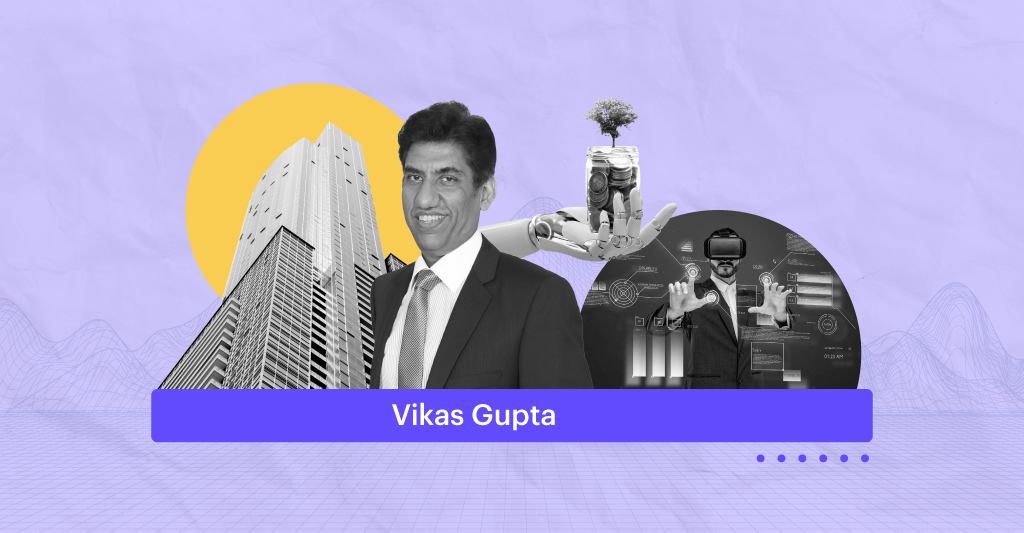Last Updated on Oct 31, 2022 by
Metaverse! When brands like Nike, Adidas, Zara, Gucci, Coca-Cola, Hyundai and Forever 21 are already in it; and, one of the largest social media companies has changed its name itself to showcase its focus on it, then we can be sure that there is something real going on!
With prominent consulting and investment firms, such as McKinsey, Deloitte, Goldman Sachs, and Citibank estimating that the Metaverse could become a $5-$15 tn economy with billions of consumers being part of it in around 10 yrs, one cannot dismiss it.
When three companies with combined annual revenues of $400 bn and a market cap of $2.2 tn, viz., Microsoft, Meta and Accenture, form a partnership to create a Metaverse for the Enterprise, one cannot ignore it.
Table of Contents
Where’s the scope for India?
First, the Internet evolved into the Web, which evolved into today’s Social Media. Now Mark Zuckerberg and Satya Nadella are building the next stage of the evolution of the Internet—the Metaverse, the Internet 4.0 or the Web 3.0. In addition, Autodesk, Qualcomm and Zoom are other companies partnering with Meta Platforms (formerly, Facebook) to build the future of the Metaverse.
Besides these, Apple, Amazon, Alphabet (Google), and many gaming companies are building the Metaverse.
But they cannot build this alone. Someone must build the Metaverse hardware, typically the VR & AR capable sets. Someone needs to build the Metaverse platform, the technological system in the Cloud where the Metaverse, as experienced by users resides. Someone needs to build the developer tools which can enhance that platform. Someone must develop various Metaverse spaces for specific use cases, typically, an IT service provider.
And the last step is where IT service providers like Accenture and Indian IT companies excel.
Customised spaces in the Metaverse
The clients who need customised spaces within the Metaverse built for them are of at least two types, viz. consumer brands like Coca-Cola, Nike, Zara and Hyundai; and enterprises like GE, Pfizer, JP Morgan and General Motors.
Consumer brands need their branded Metaverses, which are public and open to regular users on these platforms. They aim to popularise their brands, showcase their branded products and services, and drive engagement with their existing and potential consumers.
Enterprise clients need their customised Metaverses for their employees to begin with. The employees can be trained within the Metaverse. Others might want to use the Metaverse as a place where they have formal meetings instead of in the physical world. It could combine physical and virtual meeting places with augmented reality. Enterprises also have use cases where the augmented reality feature can help a repair or maintenance person with what needs to be done. Also, eventually, B2B customers of the enterprise and then their B2C clients can all have many collaborative or customer services delivered to them via the Metaverse.
Beyond this, the gaming community, typically, is comfortable spending significantly more on hardware and is likely to be the first to adopt the Metaverse.
Despite the above heavy-duty push towards building the Metaverse, some might still be sceptical. For these, let us remind ourselves that Accenture launched Accenture Interactive in 2009 and took market share away from many advertising agencies by providing integrated digital marketing and advertising services combined with technical expertise. The revenues of this division are expected to reach $14 bn in 2022. Zero to $14 bn in 13 yrs. The moral of the story is that when Accenture launches something, one better pay attention. Recently, they rebranded this division to Accenture Song and launched a new offering—the Metaverse Continuum.
Indian IT companies in the race
Indian IT companies, never behind, have thrown their hats in the ring. Of course, remember that none of the discussion above or in the rest of the article is about investment advice. One should take investment advice from their financial advisors based on their investment objectives, financial situation, risk profile and investment horizon.
For example, Infosys has launched its Metaverse Foundry, which offers use cases such as avatars (3D personalities for people), and Virtual Reality Stores, among others. Or take Tech Mahindra, which has launched TechMVerse. TechMVerse offers various use cases, such as Meta Bank—a virtual bank, DealerVerse—a virtual car dealership, and Middlemist— an NFT marketplace.
Take L&T Infotech; they have established a dedicated Metaverse Practice unit. Some of the use cases they are targeting: are virtual storefronts, virtual events and concert spaces, and employee onboarding and collaboration.
Wipro has joined the Metaverse Standards Forum, which is focused on building a pervasive, open, inclusive Metaverse as a principal member. The Metaverse Standards Forum has companies like Microsoft, Meta, Adobe, Autodesk, NVIDIA, Qualcomm and Sony as founding members.
Further, companies like TCS, HCL Tech, Mphasis, Persistent and Zensar are all offering Metaverse development services. Since the Metaverse is still at an early stage, each company is at a different level of preparedness and focus.
Besides the above, there are companies like Reliance Jio, one of the first in the world to conduct its AGM via the Metaverse. Another pleasant surprise would be Union Bank of India which has set up a MetaVerse lounge with support from Tech Mahindra.
Several Indian brands have also forayed into the Metaverse and are exploring and experimenting. In our opinion, the keystone species are the Metaverse platform creators, primarily US companies, and the Metaverse development service providers, mainly Indian companies.
Metaverse is what we at OmniScience Capital term a latent growth vector. It is already worth $60-$100 bn but is likely to touch a $1 tn market size by 2025, and by 2030 it can touch around $10 tn by then. It is already a profitable venture for development service providers. Definitely worth understanding deeper for most investors and for the savvy ones—with a knack for quick understanding—to start investing. For those interested in learning more and understanding, OmniScience Capital has a ready solution, the Omni Metaverse India.
Disclaimer: Any mention of stocks, securities or ETFs is not a recommendation to buy, sell or hold. We or our clients may be buying, selling or holding the above-mentioned stocks and might change our opinions in future. Investing in equity markets is subject to market risks. Global investing has added risks, including country and currency risk. Investors should take the advice of their financial advisor and make investment decisions according to their individual risk profile and investment objectives.
This article is written by Dr Vikas V Gupta, CEO and Chief Investment Strategist at OmniScience Capital. He believes that “Chasing Alpha leads to Risks and Chasing Safety leads to Alpha”. Check out smallcases created by OmniScience Capital.
- The Risks And Rewards Of Investing In AI-Focused Companies - Mar 29, 2023
- Do Low P/E Stocks Have the Potential To Deliver High Returns? - Feb 20, 2023
- How Does Nasdaq Impact the Indian IT Sector Market? - Dec 5, 2022




